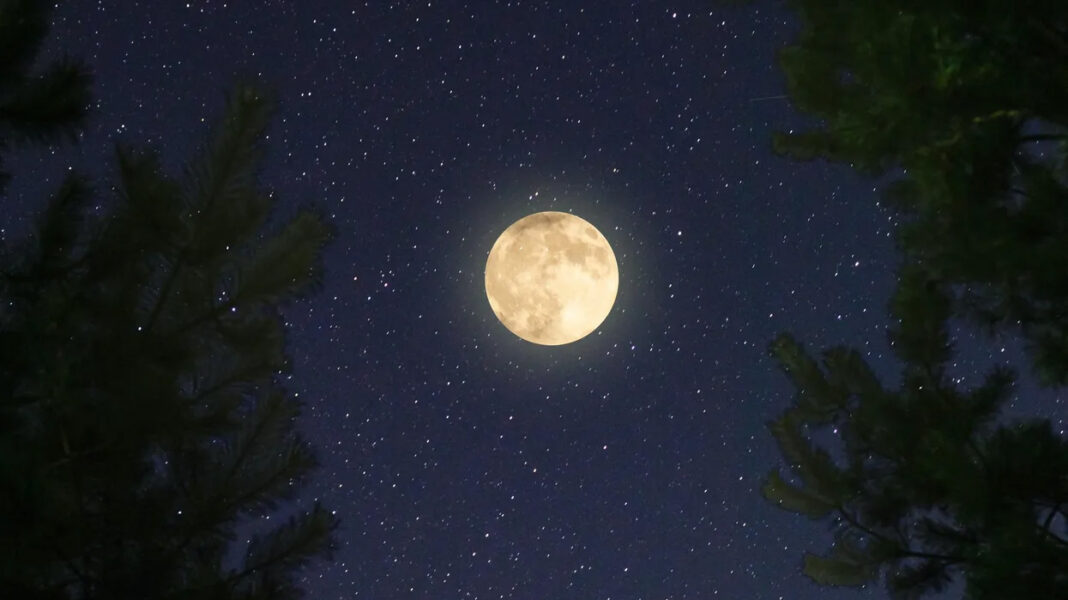There will be plenty of beautiful celestial events to light up the night sky from August to December, giving Canadians ample opportunities to go outside and witness shooting stars in the night sky.
So, if you’re looking for some timing on when you can catch a supermoon or a meteor shower, here’s a guide for you for the rest of the year.
August
August 2023 is quite impressive for celestial events.
Most years, there’s only one full moon in each month since the cycle is 29.5 days, according to NASA. But this August will be different, as there will be two full moons before the month ends.
The full moons will not only appear twice, but they will also be supermoons, meaning they will appear brighter and larger than usual.
The first supermoon occurred on August 1st when Canadians could witness the Sturgeon Moon.
Then, at the end of the month, from the evening of August 30th to the early morning of August 31st, we will have the Blue Moon. Unfortunately, it doesn’t mean the moon will actually be blue. However, it’s a rarer phenomenon, occurring only every 2-3 years.
In addition to the two supermoons, Canadians will also be treated to the peak of the Perseids meteor shower in mid-August.
Perseids are considered the “most beautiful meteor shower of the year.” Though it started on July 17th, the peak will occur on the night of August 12th and early morning of August 13th, 2023.
At its peak, you may see up to 100 meteors per hour moving across the sky at a speed of 59 km per second.
September
In September, Canadians can catch another supermoon in the sky. EarthSky reports that from September 28th to September 29th, the Harvest Moon will appear, and this will be the final supermoon of the year.
The maximum brightness of the supermoon will be at 5:58 AM ET, so you’ll need to wake up early to catch it at its best.
October
October will be the month of eclipses, with both lunar and solar eclipses expected to occur in various regions of Canada throughout the month.
According to the Canadian Space Agency, a partial lunar eclipse will be visible across Canada on October 14th, 2023, as the moon will be between the Earth and the Sun, casting a shadow on the Earth.
If you want to watch it, you’ll need to purchase some special eclipse glasses with filters designed specifically for viewing eclipses. Unfortunately, regular sunglasses will not adequately protect your eyes, according to the space agency’s warning.
At the end of the month, people in Eastern and Northern Canada will be able to observe a partial lunar eclipse on the night of October 28th, into the early morning of October 29th, 2023.
In addition to the lunar eclipse, October will also witness the peak of the Orionids meteor shower on October 20-21, 2023, where you may see about 10-20 meteors per hour.
November
In November, Canadians can catch three different meteor showers happening throughout the month.
First will be the Southern Taurids meteor shower, predicted to peak around November 6, 2023. Next will be the Northern Taurids meteor shower, expected to peak on November 13, 2023.
Both meteor showers won’t have significant peaks like other meteor showers, but they can be observed from late October to early November.
The Taurid meteors tend to move slowly but can be quite bright, according to EarthSky. With optimal viewing conditions (dark skies with no moon), they create around 5 meteors per hour or up to 10 meteors if they overlap.
Following the Taurids, Canadians will also have the chance to witness the Leonids meteor shower, peaking late on the night of November 17th until the early morning of November 18th. However, you can also have a good view on the morning of November 17th.
December
December even brings more meteor showers to the Canadian sky, including the Geminids, which EarthSky considers one of the “best meteor showers in the Northern Hemisphere.”
The Geminids are “thick, white, and bright” and predicted to peak around December 13 and 14, 2023, and you’ll be able to see them throughout the night.
With a new moon falling on December 12th, the sky will be quite dark during the Geminids’ peak, so if you’re prepared to bundle up and brave the cold, you may be treated to a spectacular display of shooting stars.
At the end of the month, the final meteor shower of the year – the Ursids meteor shower – is predicted to peak around December 23rd, so keep an eye out on the early morning of December 22nd and 23rd as the best time.
Where to Watch These Celestial Events?
To get the best view of supermoons or meteor showers, you’ll need a dark sky, with little to no light pollution. So, consider heading to one of Canada’s many dark sky preserves across the country.
Parks Canada has 13 different dark sky preserves throughout the provinces and territories, well worth exploring for the most impressive night sky views.





